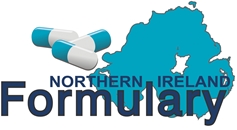- Offer combination therapy with an oral triptan and an NSAID, or an oral triptan and paracetamol.
- If monotherapy is preferred, offer an oral triptan, or NSAID or aspirin (900mg every 4-6 hours when necessary up to a max 4g daily), or paracetamol.
- Consider adding an anti-emetic (see notes below) even in the absence of nausea and vomiting.
Prescribing Notes
- Refer to NICE CKS Migraine or BASH Guidelines for more comprehensive information.
- Mild infrequent migraines can be treated with over the counter medicines. Analgesics and a number of combination medicines (analgesic plus antiemetic) are available to purchase.
Standard Analgesics/NSAIDs
- Most patients with true migraine have gastric stasis during an acute attack. Soluble/dispersible tablets are particularly useful in migraine as they are absorbed quickly and have a more rapid effect than non-dispersible tablets.
- Paracetamol suppositories or diclofenac suppositories (off label) may be useful for pain relief if vomiting occurs during migraine.
- Do NOT use ergots or opioids.
- Chronic overuse of acute treatments may cause Medication Overuse Headache (MOH). Chronic overuse of analgesics should therefore be avoided.
- Triptan, opioids and combination analgesics are likely to result in the development of MOH more rapidly (treatment taken on 10 days or more per month) compared to simple analgesics such as paracetamol (treatment taken on 15 days or more per month).
- GPs can guide patients by suggesting use of rescue medication on no more than 2 days per week on average.
- Some patients may be at increased risk of experiencing toxicity at therapeutic doses of paracetamol, particularly those with a body-weight under 50 kg and those with risk factors for hepatotoxicity. Clinical judgement should be used to adjust the dose of oral and intravenous paracetamol in these patients.
Anti-emetics
- Consider adding an anti-emetic such as metoclopramide or prochlorperazaine (see section 4.6.1).
- Anti-emetics have an independent action on migraine, so can be considered even if nausea or vomiting are not present.
- If vomiting restricts oral treatment, consider buccal prochlorperazine tablets.
- Metoclopramide can cause acute dystonic reactions especially in patients under 20 years of age. It can be prescribed for short term use (up to 5 days) for the symptomatic treatment of nausea and vomiting associated with acute migraine (where it may also be used to improve absorption of oral analgesics). Click here for further information.
Triptans
- Medication should be taken as early as possible after migraine headache starts, but not during the aura phase. Headache recurrence within the first 24 hours can be treated with a second dose.
- Sumatriptan 50mg is recommended as first line choice. The 100mg dose has more adverse effects and is only marginally more effective.
- If the first dose of a triptan fails to help, alternative medication should be considered.
- If treatment with sumatriptan proves to be inadequate, assess compliance and consider:
- Increasing to a dose of sumatriptan to 100mg (if not used already).
- Other triptans should be offered if sumatriptan fails. Patients have a variable response to triptans and it is worth sequencing through the triptans to find the most effective treatment.
- If vomiting restricts oral treatment, a non-oral formulation, such as intranasal spray or subcutaneous injection should be considered.
- Subcutaneous sumatriptan should be considered in severe migraine or where vomiting precludes oral treatment or where other formulations have been ineffective.
- Sumatriptan 50mg tablets are available over-the-counter to buy from pharmacies and patients should be asked about any OTC triptan use.
- Overuse of triptans (use on more than 2 days per week) should be discouraged due to the risk of medication overuse headache.
Cautions
- Triptans should not be given to people with uncontrolled hypertension, coronary heart disease, cerebrovascular disease or coronary vasospasm.
Other Treatments for Migraine
Rimegepant has been assessed through the managed entry process, see Managed Entry.
